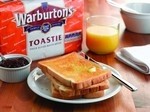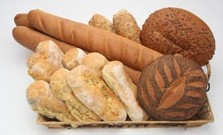Warburtons markets own solution to sticky dough

The UK bakery brand in partnership with Stable Micro Systems (SMS), have launched the Warburtons Dough Stickiness System, which they claim could help speed up and simplify the testing process for sticky dough in commercial bakeries.
Already being used by Warburtons following an 18-month trial, the system is suited to large bread dough pieces, accommodating dough sizes of 500g to 1000g
Jo Smewing, SMS applications manager, told Foodmanufacture.co.uk: “Not all bakeries test for stickiness, but sticky dough presents a common problem in bakery manufacture.
“Dough sticks to the equipment leaving a build-up. This prevents machinery parts from moving smoothly and more stoppages and downtime are required for the cleaning of equipment. Ultimately, sticky dough hampers operating efficiency.”
Quality losses
A common response to dough stickiness is to reduce the level of recipe water added to the mixer or through the use of ‘dusting’ flour, she said. “Both have the potential to introduce quality losses in the final product since flour qualities and recipe ingredients can also contribute to dough stickiness.”
Warburtons’ research, development and engineering team worked with SMS to develop a sample testing box into which dough samples can be placed quickly and with minimum exposure of the cut surface to the atmosphere.
Smewing said: “The test rig features a specially designed testing box that allows for the manufacturing environment to be recreated in terms of temperature and the level of exposure of the dough sample to the atmosphere – both of these factors influence dough stickiness.
“Previous or alternative testing methods fall short of matching the factory environment, as dough samples are manipulated immediately prior to testing.”
Unit dough pieces can be taken for testing immediately after they have left the dough divider so that manipulation consists only of lifting the dough piece from the processing belt and placing it directly into the testing box.
Problem of stickiness
Smewing added: “The ability to measure the properties of the dough provides a means of assessing the results of any modifications to processing that may be made in order to prevent the problem of stickiness.”
Data is taken by placing a retaining plate on top of the dough, applying slight compression and driving a narrow blade through a slot to a defined distance. This assesses the compression peak and compression area of the dough – indicators of its consistency.
SMS’s Exponent software then calculates the adhesion peak and adhesion area. The higher the peak, and/or larger the area, the stickier the dough.
The system mimics actions carried out in commercial bakeries. SMS claimed it is ideally suited to this sector of the baking industry due to the high speed of the test, the ease of cleaning between tests and the reduced need for temperature-controlled environments.















